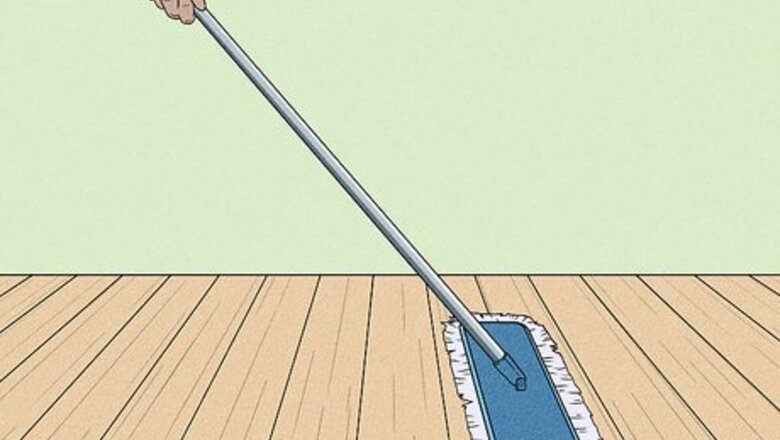
views
Cleaning Regularly
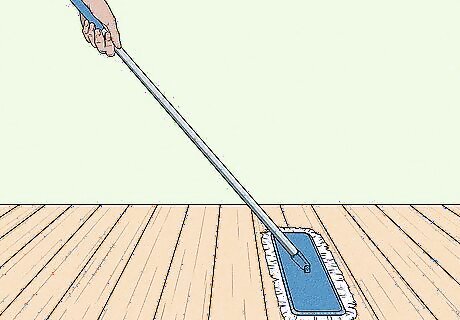
Clean the floor regularly with a damp dust mop. Pergo floors will attract dust, so you’ll want to make sure you wipe it clean regularly with a dust mop to remove the most obvious particles. A regular wipe with a dry mop or static cloth should get most of the dust. Before wiping down the floor, wet your dust mop slightly. A bucket of water nearby should be enough to keep the mop moist. You don’t want to soak your mop, just get it damp. If it is too wet, wring it out before putting on the floor. If you are cleaning in sections, you can also use a spray to mist the floor before mopping. Mix 1 cup (240 mL) of white vinegar with 1 gallon (3.8 L) of warm water. Pour the mixture into a spray bottle, spray the floor, then quickly wipe with your mop. There should not be any moisture left after a minute of drying.
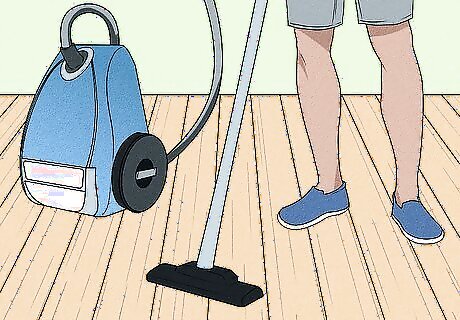
Use a vacuum to suck up dirt, dust, and hair. Clean dirt or other obvious impurities with a vacuum cleaner. Put your vacuum on a setting for hard floors, or use an attachment if you are particularly concerned about scratching the surface.
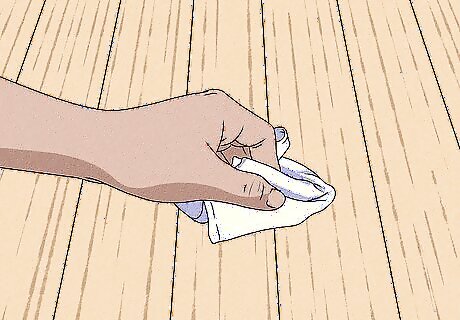
Use a cloth wipe for touch-ups. For small sections of the floor in need of a quick cleaning, a cloth wipe should pick up the dirt or dust. It is better to keep the cloth dry, but you can moisten it slightly for a little more adhesion. Just make sure there is no moisture left over after you are done wiping.
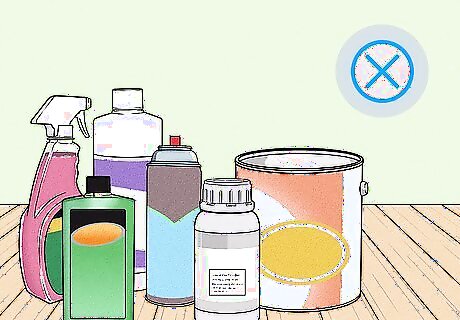
Avoid using improper cleaning materials. Like other forms of laminate flooring, there are common cleaning products you should not use because they will damage the floor. Make sure you avoid using this cleaners. Never use cleaners with soap or detergent and avoid using wax or polish. These products can leave a residue that makes the floor dull and filmy. Do not use a steam cleaner or similar device. The excess moisture will leave streaks in the floor.
Removing Spots and Stains
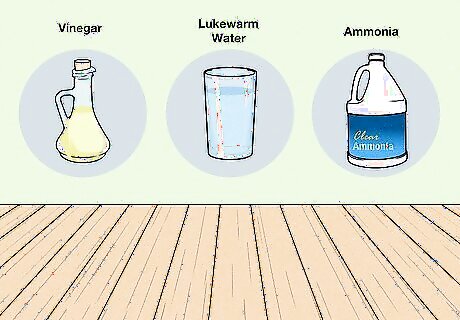
Clean liquid spills with lukewarm water. For stains from items such as chocolate, grease, juice, or wine, a mixture of lukewarm water and a non-abrasive cleaner should help avoid a stain or other damage to the wood. Ammonia and vinegar are good liquids to mix with the water for liquid stains.
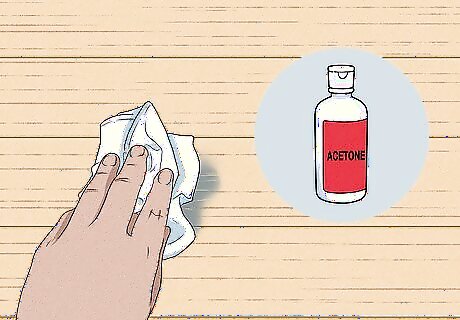
Use acetone for tougher stains. Acetone, commonly found in nail polish remover, can be useful for dealing with stains from tar, markers, crayon, lipstick, oil, shoe polish, nail polish, or cigarette burns. Apply a small amount to the stain, then wipe the area with a clean, soft cloth.
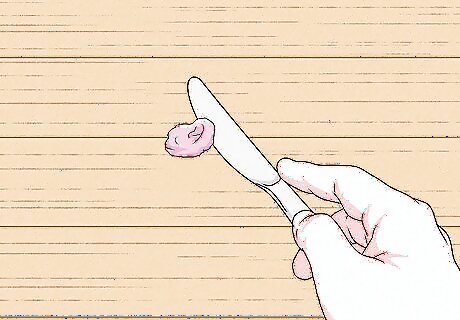
Scrape off hard substances. For something tough and solid, like chewing gum or candle wax, use a blunt plastic scraper. Make sure the substance has hardened before trying to scrape it away. If you don’t want to wait for the substance to harden on its own, use an ice pack to help chill it. Once it is cold and hard, then use the scraper.
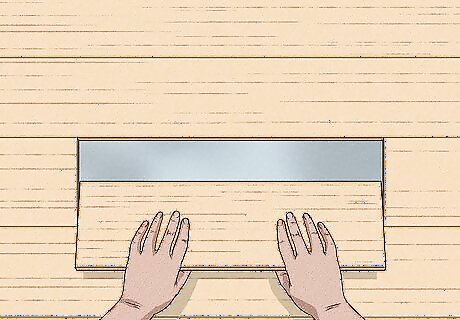
Replace the flooring if you have large, set-in stains. If you have a large stain that will not come out from any of these other methods, you will need to have part or all of the flooring replaced. Talk to the retailer or installer who provided your Pergo flooring, and discuss replacing the stained area.
Protecting Your Floor

Put rugs near entrance-ways. To prevent visitors from bringing in dirt, mud, or other filth from outside, make sure there are rugs near the entranceway. Have people remove their shoes, or wipe their feet off before going too far onto the flooring. Opt for rugs made from natural fibers like cotton, wool, or bamboo. Avoid using rugs with latex or rubber backing, as they can damage Pergo flooring. If your rug does have this type of backing, place a felt rug pad between the rug and the floor. You can also use area rugs throughout the room for areas where people will walk. Make sure you clean these rugs regularly to prevent the accumulation of dirt.
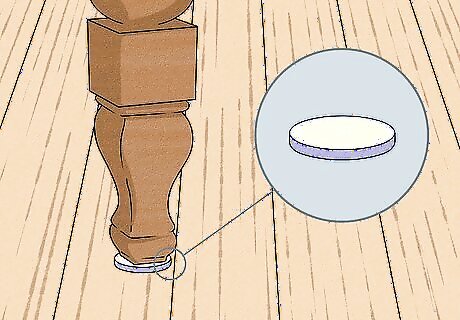
Use felt floor protectors. Use felt to cover the feet and bases of large moveable furniture like chairs, tables, and TV stands. A small piece of felt to put something between the base or leg of your furniture and the floor will prevent inadvertent scratching. Rugs can be helpful here as well. Place an area rug underneath large furniture that might shift around, like couches. Remember that rugs collect dirt, so be sure to clean them regularly. If you have chairs that might move often, consider replacing their feet with wheels for more ease of motion. You’ll still have to keep an eye out for scratching, but this will create easier movement.
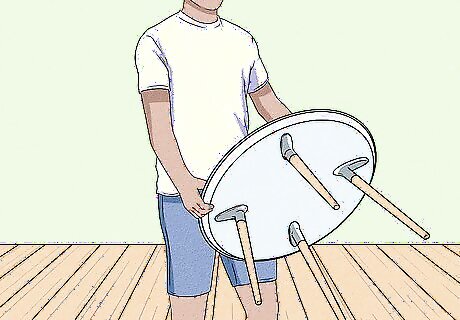
Carry things over the floor. If you do need to move items around in the room, lift them off the ground instead of dragging them. For particularly large objects, get friends and family to help so nothing drags along and scratches the floor. Always remember to lift correctly by using your knees and keeping your back straight. Never lift more than you can comfortably handle, and don’t be afraid to wait for help with especially large objects.
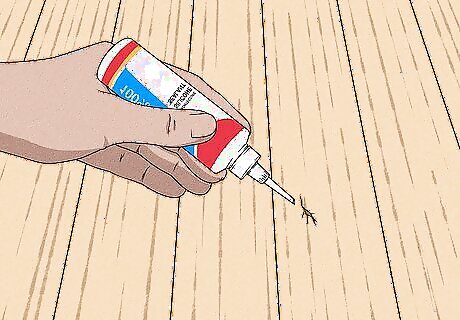
Repair cracks with putty. If you notice a small crack or dent in the floor, Pergo makes a finishing putty that can seal the crack. Anything about ⁄4 inch (6.4 mm) in size or smaller should be easily fixable on your own. If the damaged area is greater than ⁄4 inch (6.4 mm), replace the plank. A professional installer can be found by calling the Pergo consumer helpline or visiting the Pergo website. It may also be helpful to keep some of the flooring planks after the installation to ensure you always have replacements on hand.














Comments
0 comment